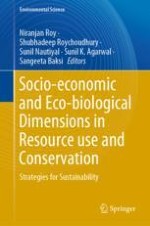2020 | OriginalPaper | Buchkapitel
Medicinal Plant Biodiversity in India: Harnessing Opportunities for Promoting Livelihood and Food Security
verfasst von : Sunil Nautiyal, K. C. Smitha, Harald Kaechele
Erschienen in: Socio-economic and Eco-biological Dimensions in Resource use and Conservation
Aktivieren Sie unsere intelligente Suche, um passende Fachinhalte oder Patente zu finden.
Wählen Sie Textabschnitte aus um mit Künstlicher Intelligenz passenden Patente zu finden. powered by
Markieren Sie Textabschnitte, um KI-gestützt weitere passende Inhalte zu finden. powered by
